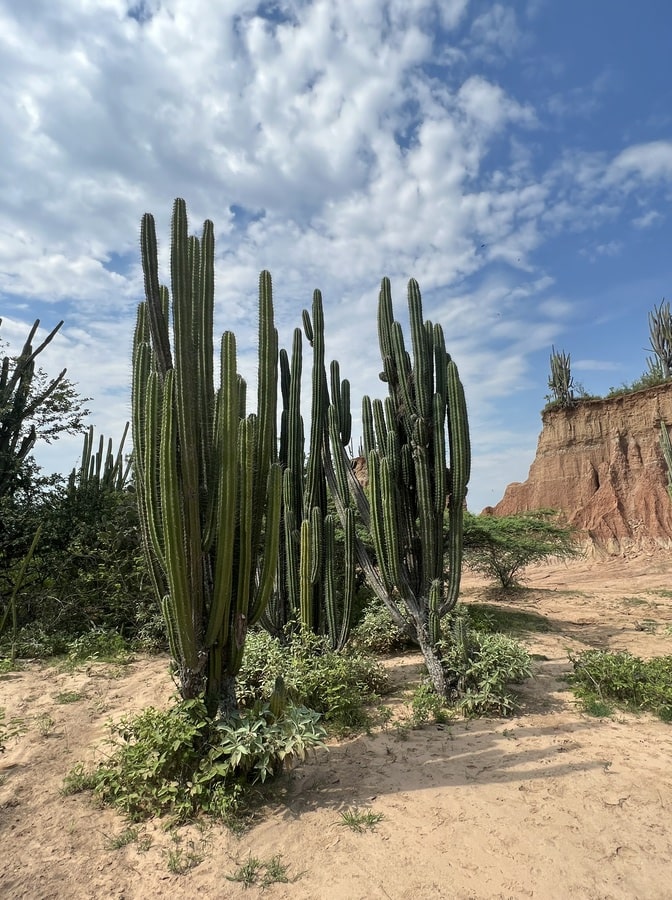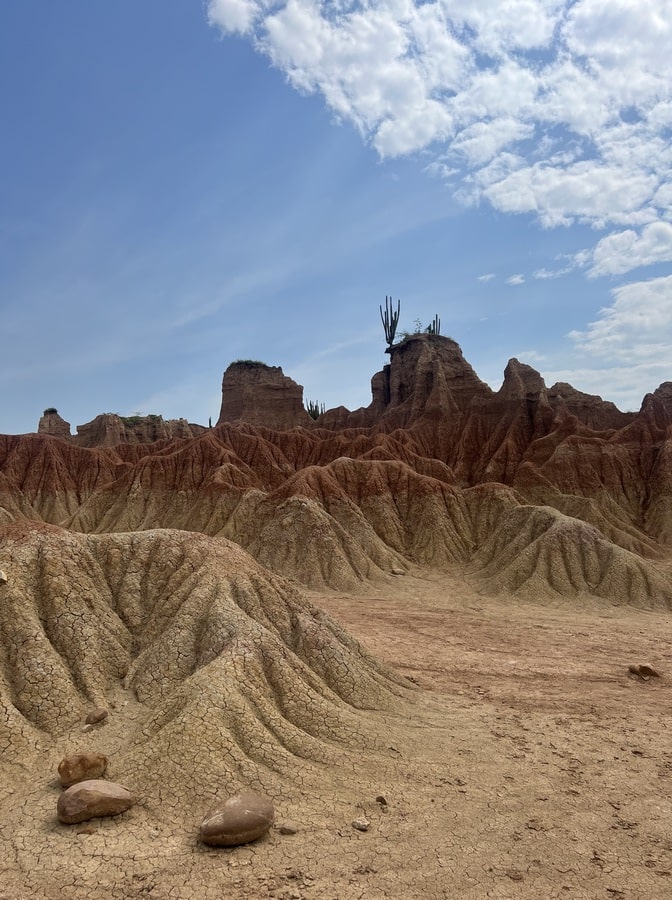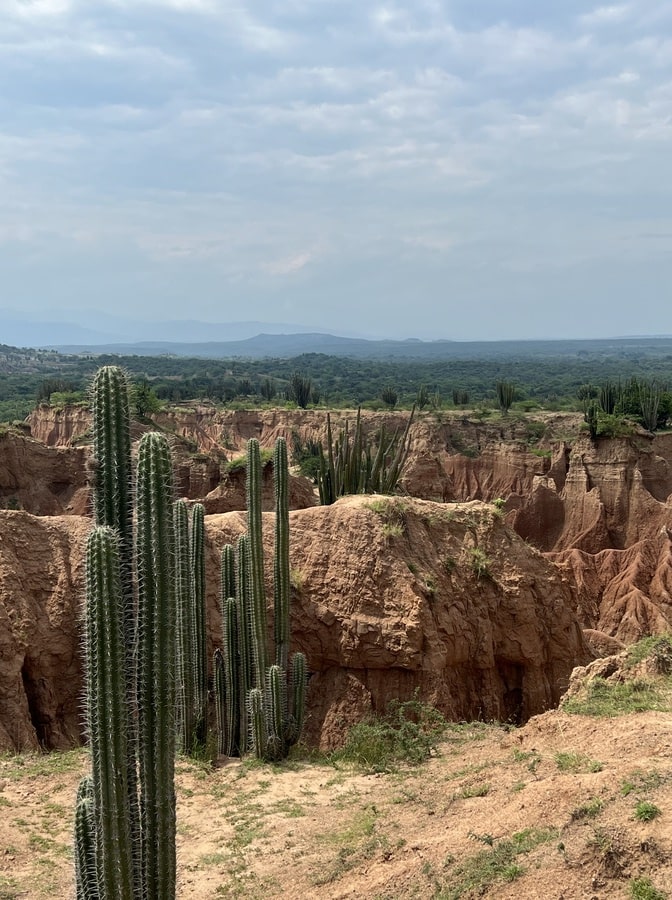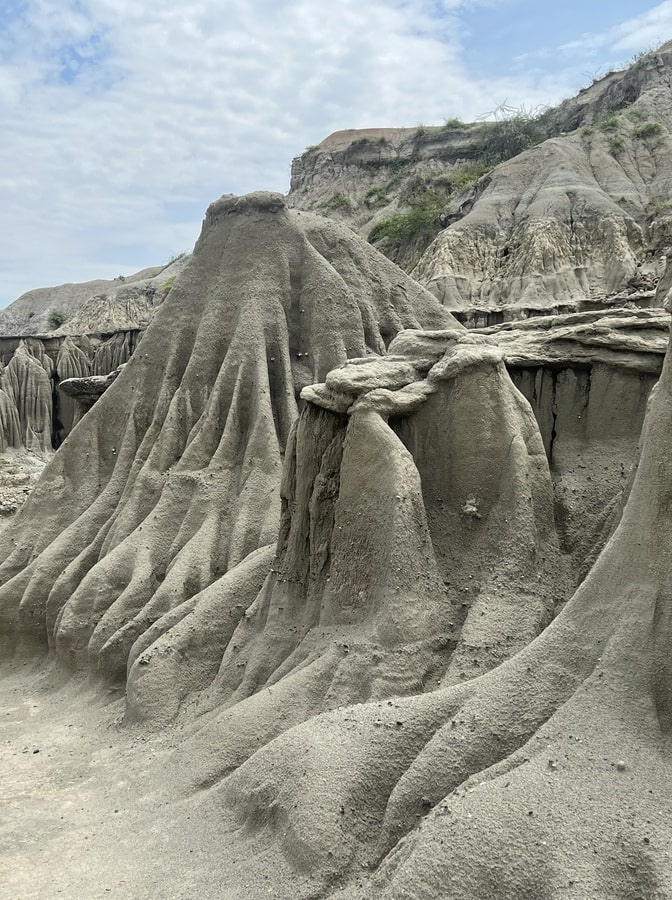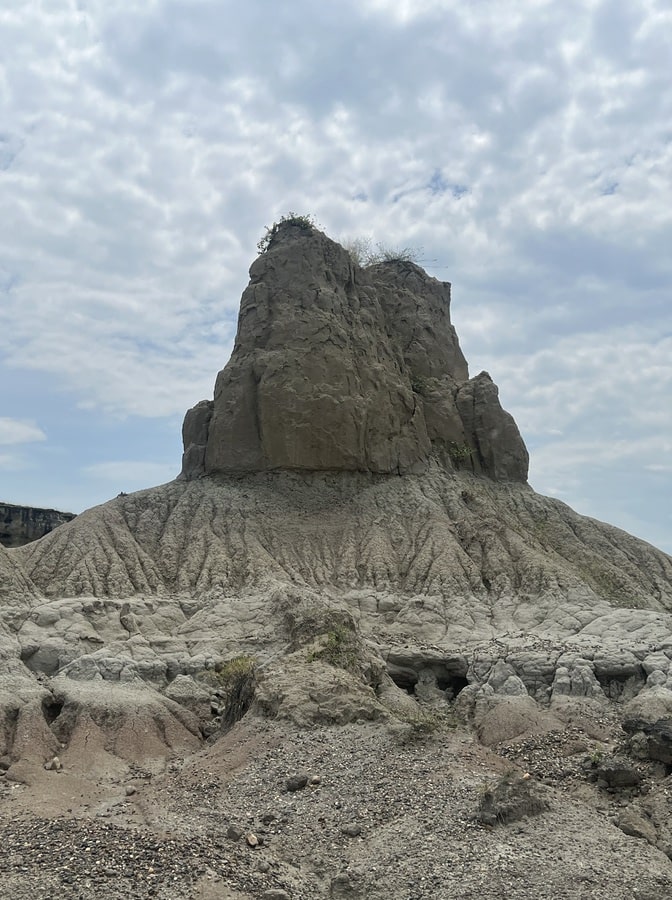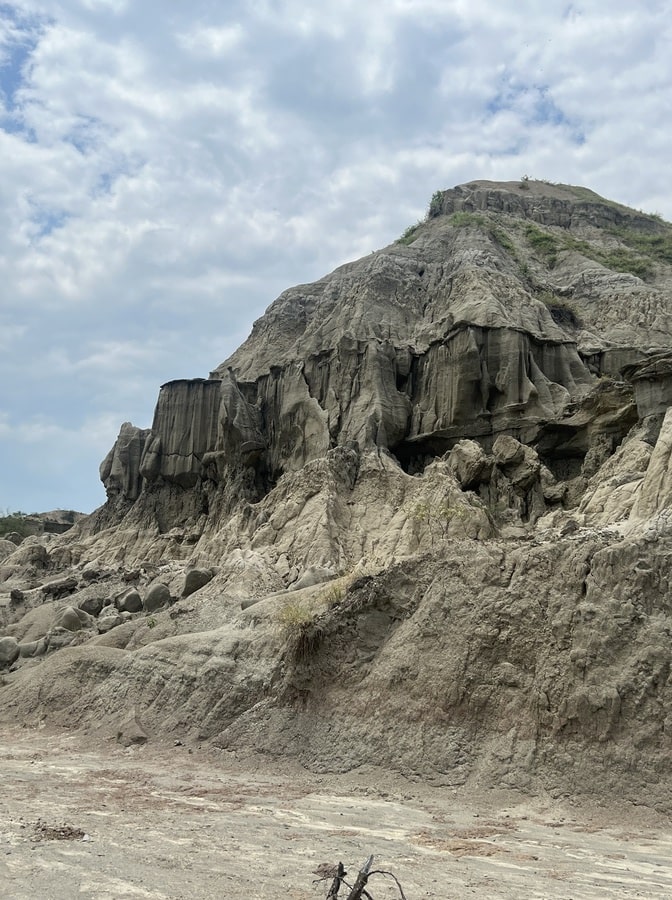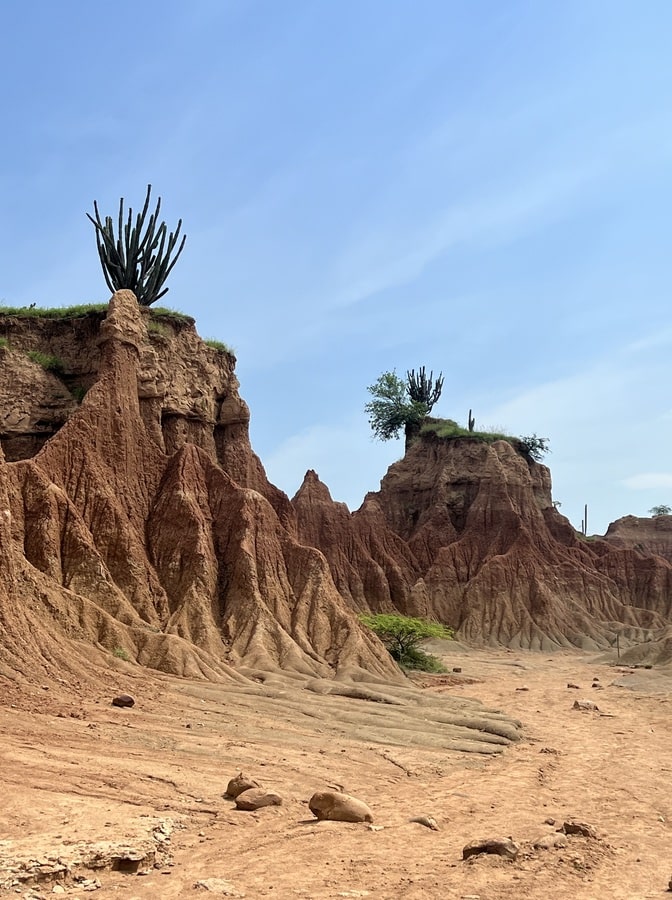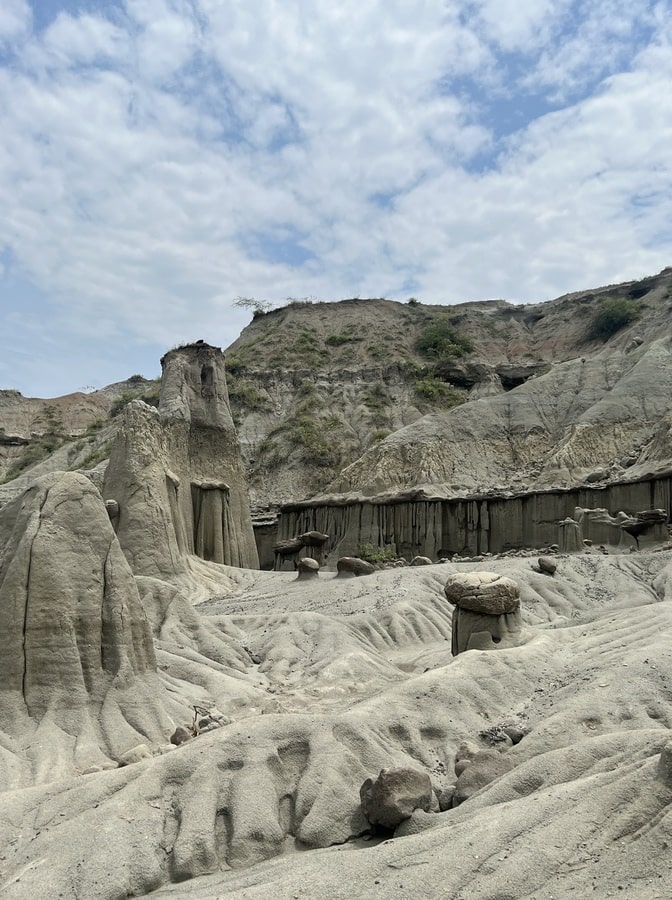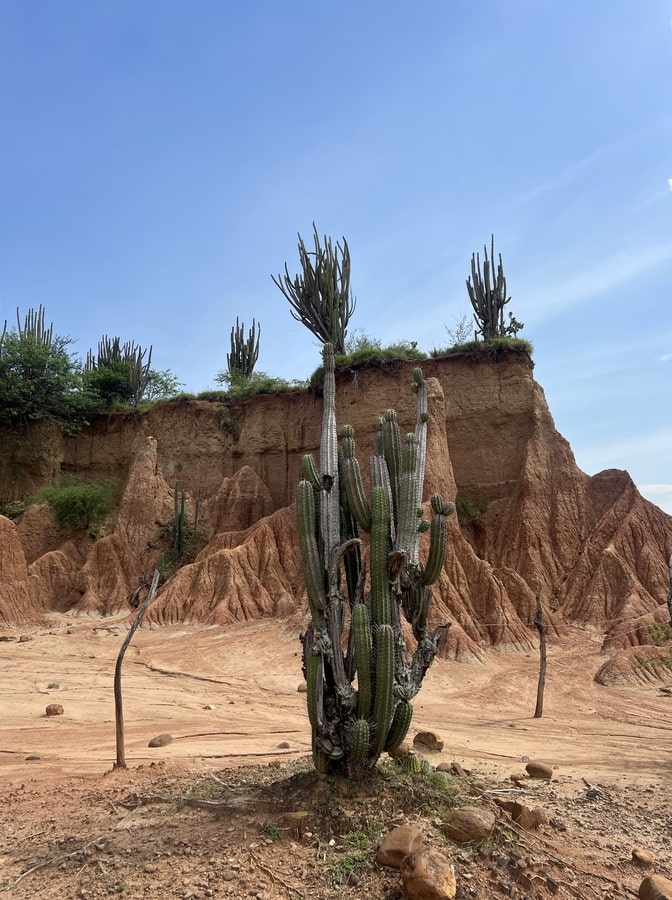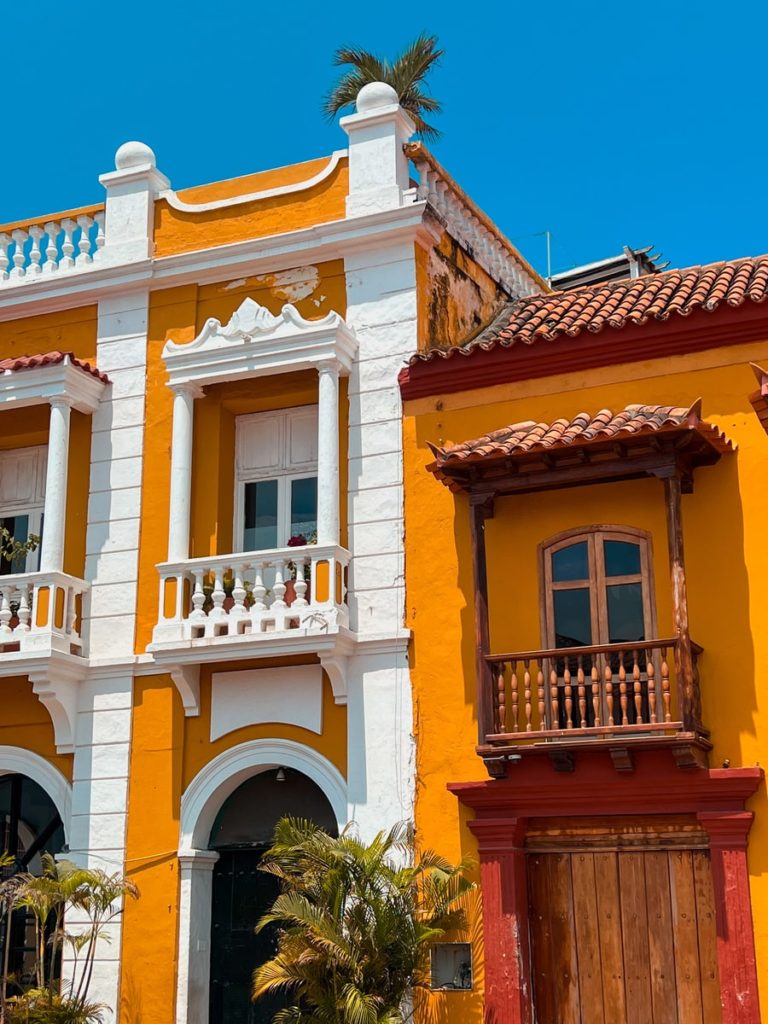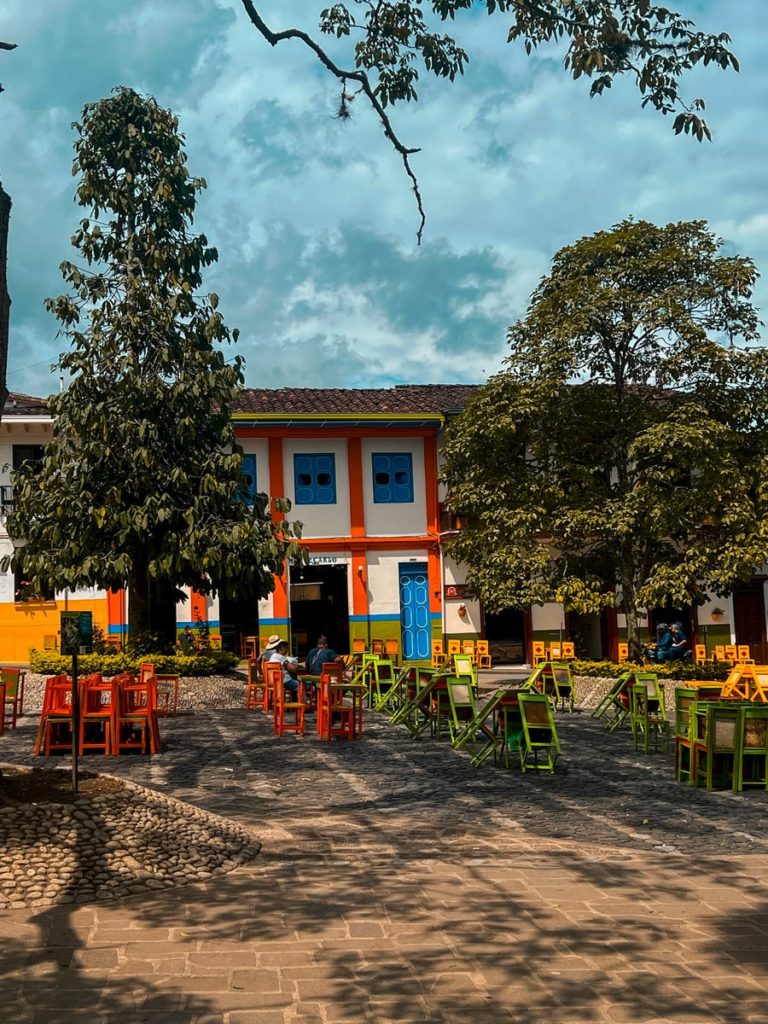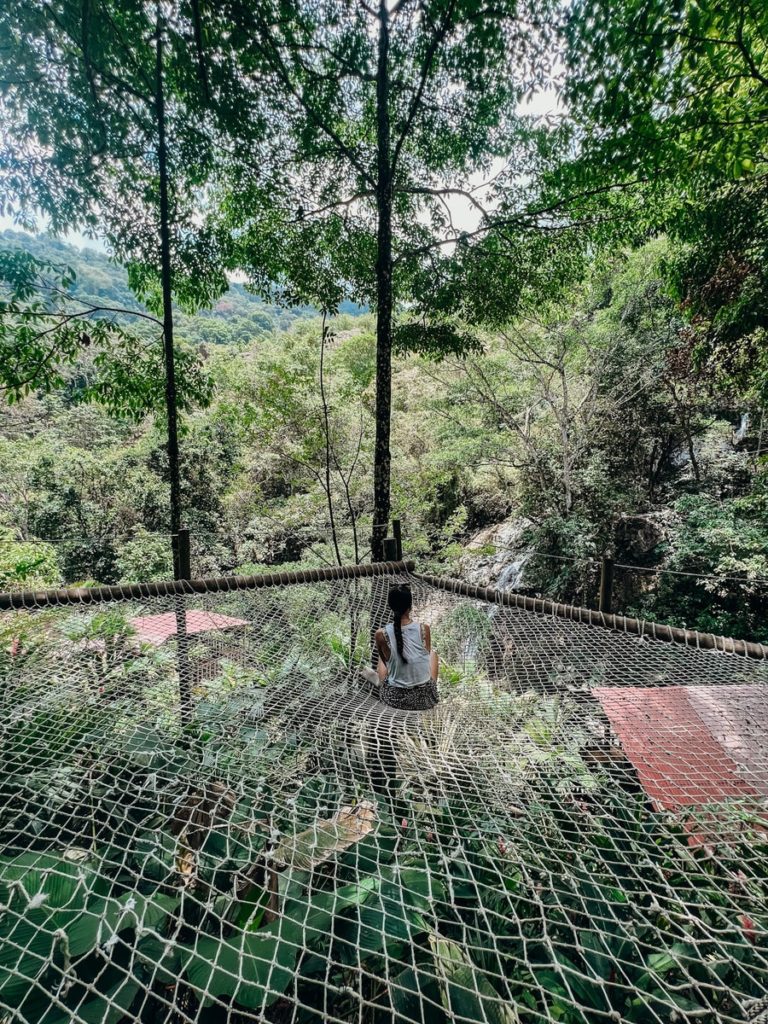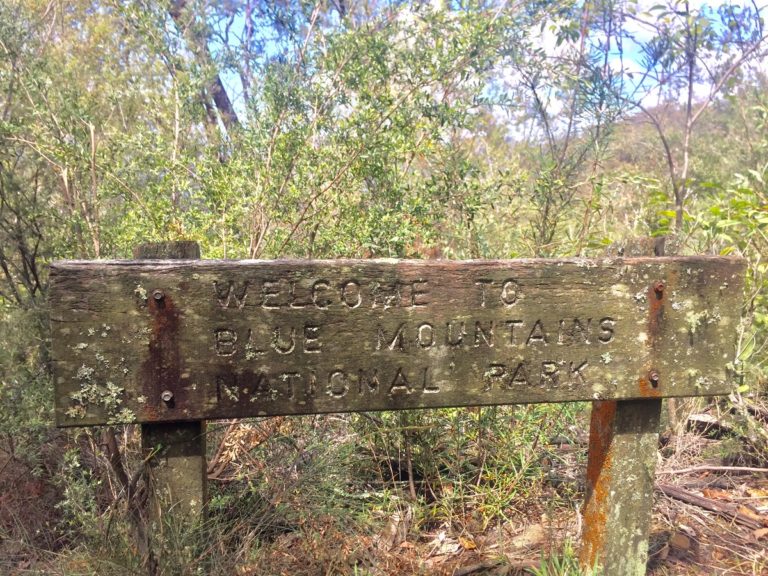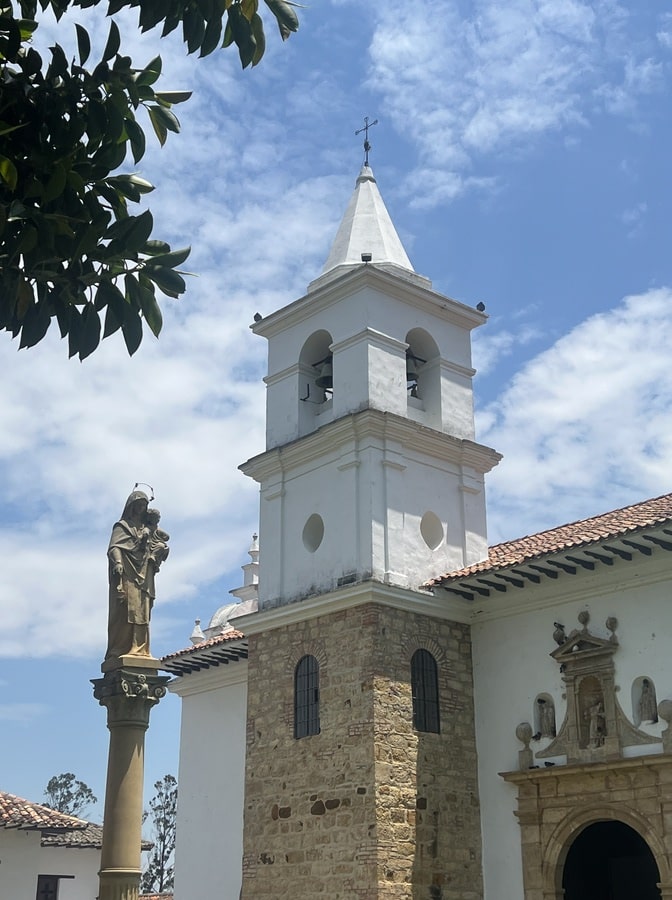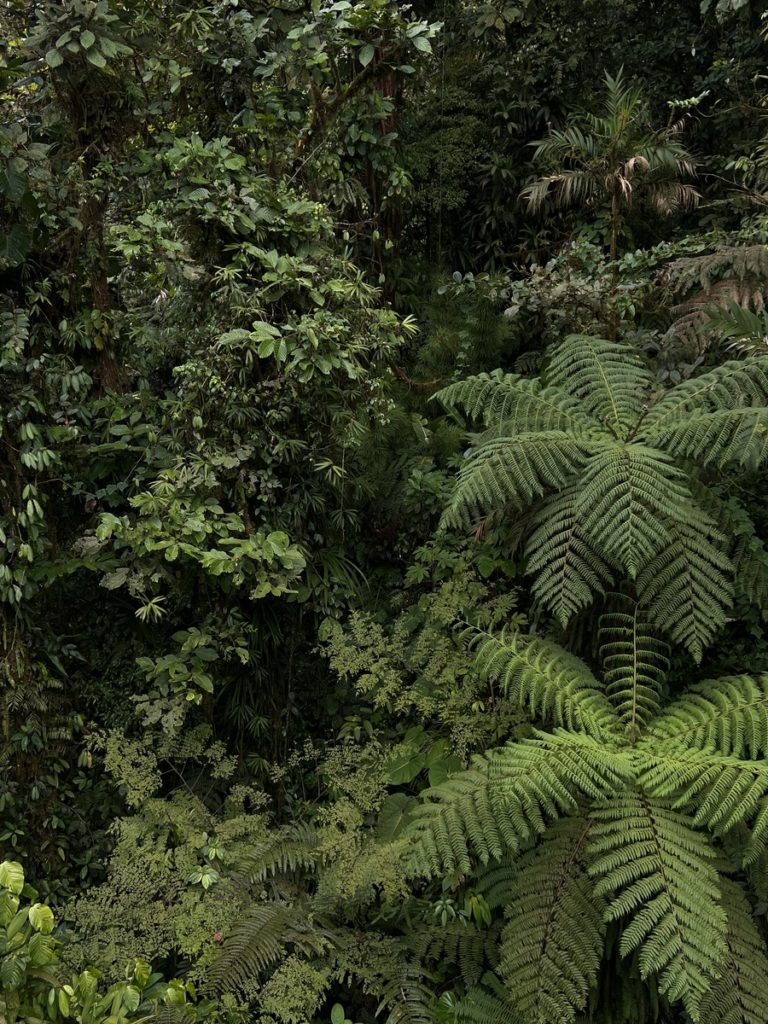A Guide to the Tatacoa Desert, Colombia
Located in the Huila department of Colombia, the Tatacoa Desert is a destination to not miss whilst travelling Colombia. This was one of those travel destinations that I won’t forget anytime soon. That feeling of overwhelming appreciation for this earth and its wonders doesn’t happen everywhere, so you know the Tatacoa Desert must be something special.
Keep reading to discover everything you need to know about visiting the striking Tatacoa Desert, Colombia.
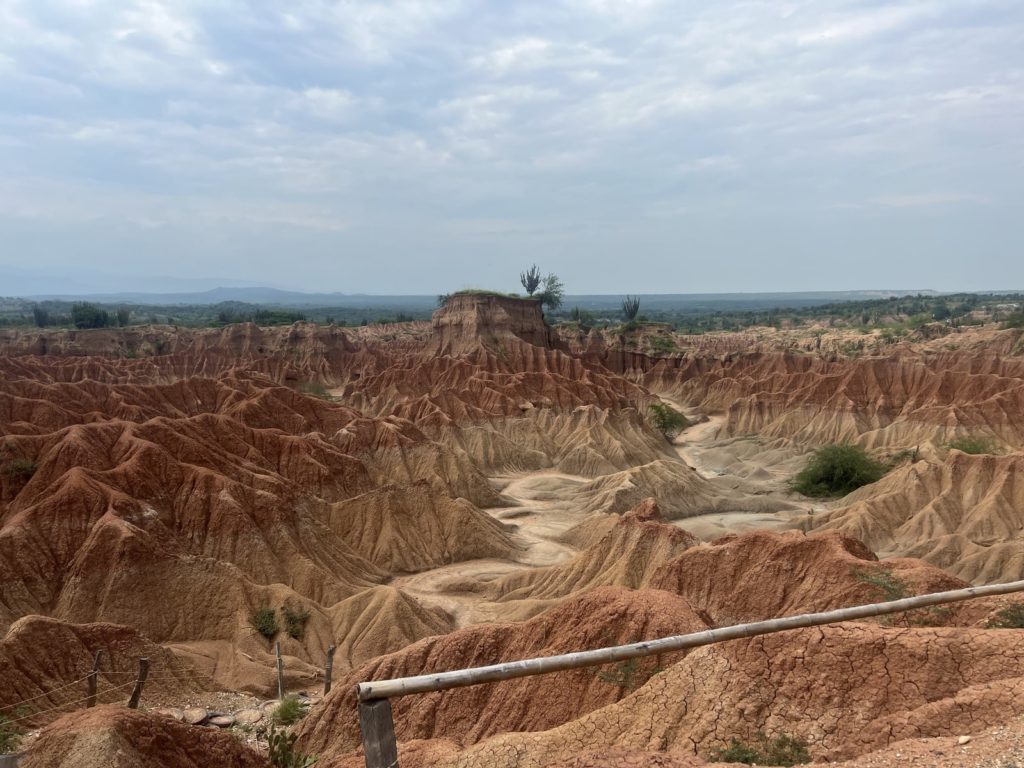
What is the Tatacoa Desert?
The Tatacoa Desert or El Desierto de la Tatacoa is the 2nd largest arid zone in Colombia and spans an area of 330 square kilometres. Unlike a traditional desert, Tatacoa lacks defining features like sand deposits or sand dunes. Instead, it’s considered a tropical dry forest, but honestly, it doesn’t look a thing like a forest in my eyes. The terrain consists of heavily eroded rocky terrain sculpted by dry canyons, it’s a stunning sight.
There are two parts to the Tatacoa Desert, the red (Cuzco) and the grey desert (Los Hoyos), you’ll find the different colours of the two parts are due to the minerals in the ground. A long long time ago, back in the tertiary period, the Tatacoa Desert was home to rich green tropical forests with a lot of vegetation and creatures roaming around, many of which don’t exist today. This area has been a site of many interesting fossils finds, including one in 2020 when a fossil of a car-sized turtle was discovered.
Where to Stay in the Tatacoa Desert?
You have two options you can stay in the small town of Villavieja located just on the outskirts or you’ll find some accommodation options located within the Tatacoa Desert.
Personally, we chose to stay in Villavieja and if you wish to do this, I can highly recommend Hotel Colonial Villavieja. The rooms were affordable and clean and the staff were super friendly there is even a pool to cool off in, not to mention they have free breakfast included too.
Booking.comFun Fact! Tatacoa means rattlesnake in Spanish, it was named this as rattlesnakes are supposedly able to survive in all conditions. Watch out….
How to Get to the Tatacoa Desert?
You’ll find yourself transiting through the city of Neiva to get to the Tatacoa Desert, the quick option would be to fly to Neiva airport. However the backpacker option would be to take the bus, you’ll find buses to Neiva from Bogota (6/7 hours), Popayan (7/8 hours) Cali (10 hours) or Medellin (13 hours).
After arriving in Neiva you will find a local bus that can take you to Villavieja, just on the outskirts of the desert. It cost us 10,000 COP each and took about an hour, they run hourly throughout the daytime. I don’t recommend travelling on a Sunday if you are going to use public transport as we had a few issues, but you can always get a taxi between Neiva and Villavieja.
From Villavieja it’s a short 10/15 minute tuk-tuk ride to the Tatacoa Desert and you will find the tuk-tuks in the main square which is also where the bus will drop you off.
Things to Do In and Around the Tatacoa Desert
Visit the Red Desert (Cusco)
Possibly the most photographed area of the Tatacoa Desert and for sure my favourite part too. You’ll find a few viewpoints that look out onto this stunning landscape and also a trail that will take you down onto the canyon floor. You’ll spot cactus plants, some even with fruit, birds and other wildlife on this trail, so make sure to have your camera on hand.
Once on the canyon floor you will start to realise just how fragile these structures are, I had assumed they were stone formations. I assumed wrong, they are actually insanely impressive soil formations.
Visit the Grey Desert (Los Hoyos)
Located about a 20-minute tuk-tuk journey from the red desert, the striking change between the two is quite something. The grey desert certainly feels much more like a maze, so be careful to not get lost here. With a little less vegetation than the red desert, I felt like I was walking on the moon here. All the angular grey formations are extremely intriguing, but be sure to look for the dark lines on the formations, this is the marker of where the water rises too during rainy periods.
You will also find some private swimming pools here, called Los Hoyos. It costs 8,000 COP per person to enter and there are 3 different pools with views over the grey desert.
Go Stargazing
As a location with limited light pollution it makes it the perfect spot to do some stargazing, just make sure you have yourself a night with clear skies. There is an observatory located in Tatacoa where you can take a guided tour of the night skies, it costs 10,000 COP per person, just note the tour will be in Spanish.
Also in July between the 17th and 20th the Tatacoa Desert holds La Fiesta de las Estrellas (Star Party), in which astronomers, students and enthusiasts gather to celebrate and share knowledge of stars.
Palaeontology Museum
Located in Villavieja, they have many fossils that were discovered in the Tatacoa Desert on display at this museum. As I mentioned before the Tatacoa Desert has a lot of history behind it, so you will find some pretty cool discoveries here. Just to note it is closed on Tuesdays.
Tour of the Tatacoa Desert
If you don’t fancy going solo through the desert or want to know more about what you are seeing, I can strongly recommend taking a guided tour. This is what we decided to do and I’m glad we did, our guide was an absolute gem and we learnt so much more than we would have just wandering around. We went with Tatacoa Viajes y Turismo, it was £45 for the two of us, check them out here. It included the tuk-tuk to and from Villavieja, a small water, guided tour of both sections and we stopped for a while at the pools of Los Hoyos.
Shoutout to the lovely small restaurant we found in Villavieja for dinner it was called Costa Azul and had a simple but tasty menu for all my fellow fussy eaters. It was on the main square in Villavieja if you would like to check it out.
Things To Know Before Visiting the Tatacoa Desert
- It’s going to be hot hot hot so I would recommend exploring the desert first thing in the morning, so you don’t get struck down on by the midday sun.
- Don’t forget to wear SPF and maybe even a hat and a coverup if you are prone to burning, also pack the bug spray.
- It’s not prohibited to fly drones within the Tatacoa Desert, however, our guide told us many people still do, we even saw one in the grey desert. Please respect the rules as this ban is in place to keep birds and other wildlife safe. But also apparently the sound of the drone can cause snakes to become irritated and more likely to bite and nobody wants that.
- I would advise getting cash out before your trip to the Tatacoa Desert, there would be ATMs in Neiva but you won’t find any in Villavieja or Tatacoa and a lot of places will be cash only.
- Don’t climb on any of the rock formations, particularly in the red desert as a lot of the formations are extremely fragile and prone to damage.
- Don’t forget to bring plenty of water, it may not officially be a desert but it’s still likely to become dehydrated due to the high temperatures and water sold within the desert comes with a high price tag.
As such a unique travel destination, I highly suggest making time for this within your Colombia travel itinerary, you won’t regret it.
*Disclaimer* This post may contain affiliate links, if you purchase through one of these links I would receive a small commission at no extra cost to you.
PIN FOR LATER
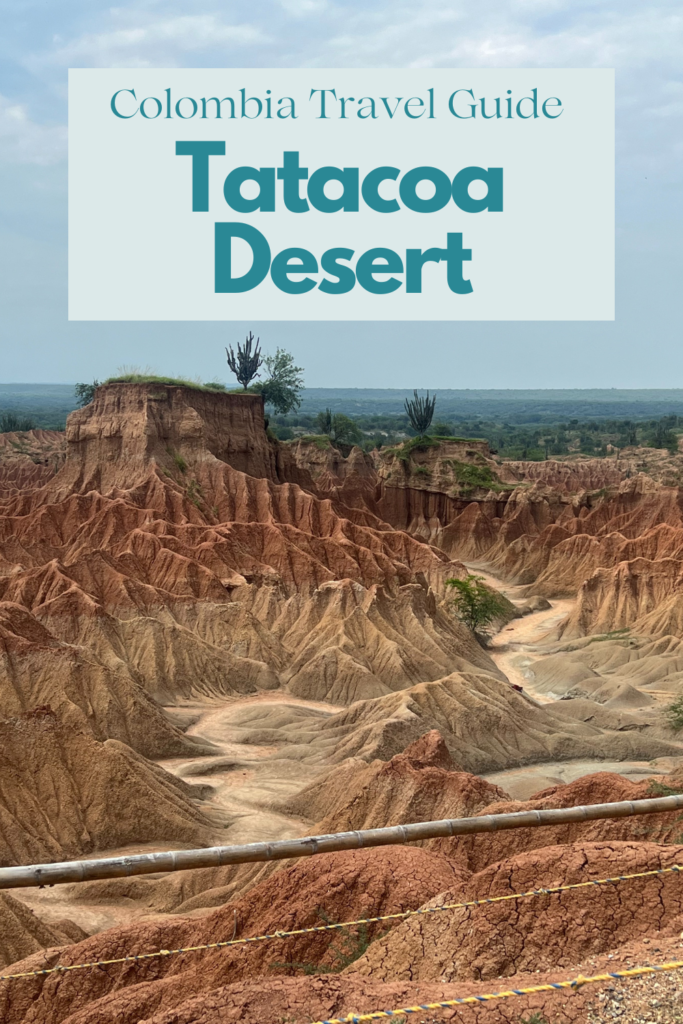
Colombia Travel Tips
The national currency of Colombia is the Colombian Peso or COP. Two things about the currency you may often see it written with the dollar symbol and also if you see prices written like this ‘$25” it most likely means 25,000 COP.
You’ll find in the large cities of Colombia such as Bogota, Medellin and Cartagena you will be able to pay by card for most things. However, outside of the cities, you will most likely need to pay in cash or if you can pay on a card you may incur a fee.
We didn’t have a problem taking cash out however a lot of ATM charge a fee, this blog post shows the different banks and which ones are fee-free.
The national language of Colombia is Spanish, not only is it respectful to know the odd phrase, I also think your trip becomes a lot easier if you have a basic understanding. Whether you watch some TV shows in Spanish, take some Spanish classes or just simply download Duolingo to practice, I think it’s important.
The plug sockets in Colombia are type A and B, which is the same as in the US, so unless you have US chargers you will need a travel adaptor. I always recommend the worldwide ones as you can be ready for anything and also it allows you to charge multiple things at once.
There is a popular saying among Colombians “no dar papaya” which basically means don’t be an easy target. Don’t flash valuables or cash, keep phones and wallets secure and close to you and have a fabulous but safe trip.
The weather in Colombia depends more on location than the season. Mostly it’s a country that has 2 seasons, dry and wet. You’ll find it’s warmer in the north e.g. Santa Marta, Cartagena and the further south you go it gets a little cooler. The weather in Medellin is described as ‘eternal spring’ and the high altitude in Bogota makes for a much cooler climate.
In terms of transport around Colombia, the fastest way is normally by taking a flight, the main airlines are Wingo, LatAm and Avianca, I usually found Wingo to be the most budget-friendly. However the most affordable way is by taking buses, you’ll find many long-distance buses available, just expect nothing to arrive on time and be extremely patient with these buses.

